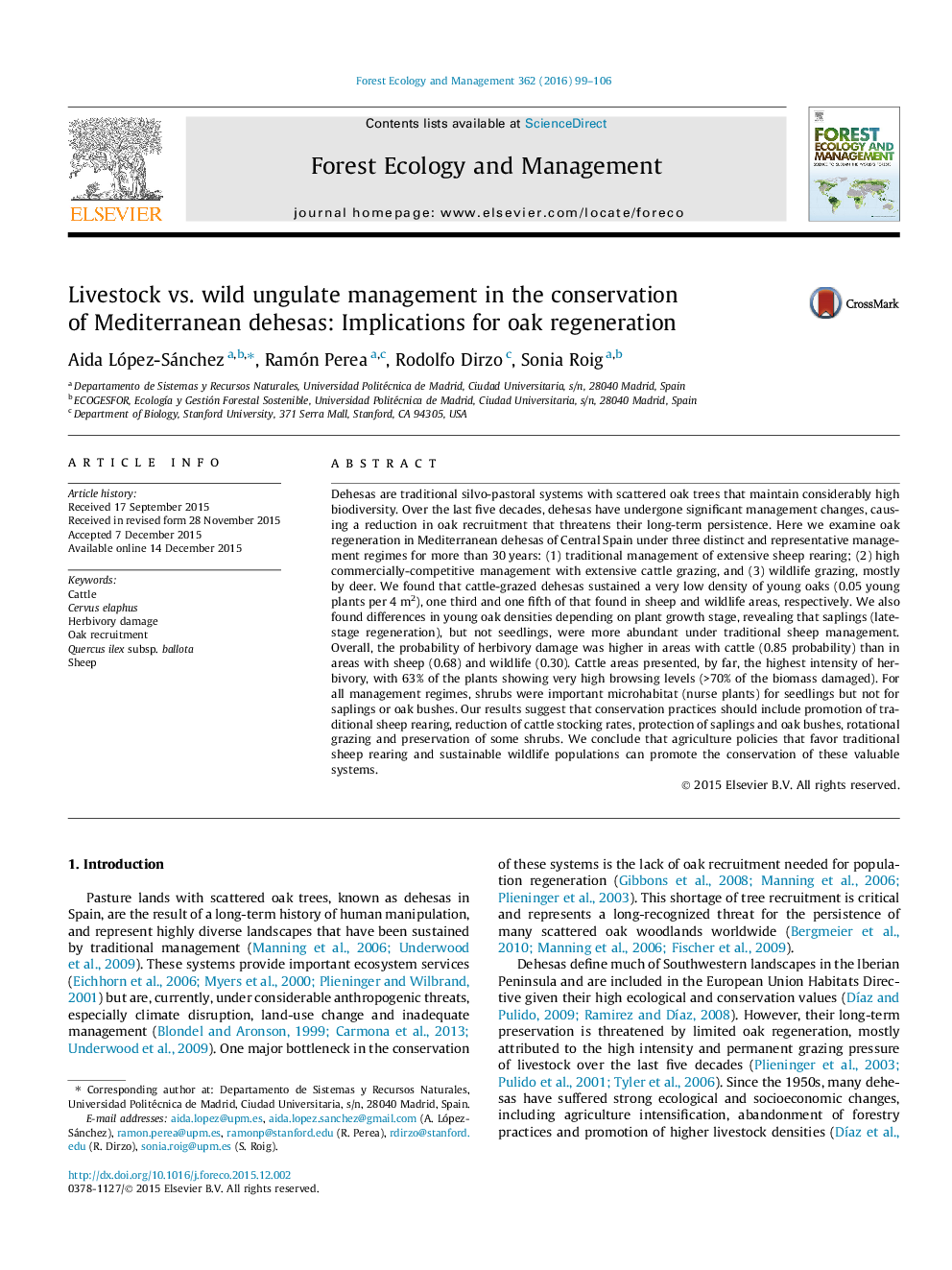| کد مقاله | کد نشریه | سال انتشار | مقاله انگلیسی | نسخه تمام متن |
|---|---|---|---|---|
| 85976 | 159155 | 2016 | 8 صفحه PDF | دانلود رایگان |
• Lack of oak recruitment is threatening the long-term persistence of dehesas.
• Density of young oaks was much lower in cattle than in sheep and wildlife areas.
• Cattle areas showed, by far, the highest intensity of herbivory damage.
• Sheep grazing favors higher abundance of saplings (late-stage regeneration).
• Conservation policies should consider traditional sheep and wildlife management.
Dehesas are traditional silvo-pastoral systems with scattered oak trees that maintain considerably high biodiversity. Over the last five decades, dehesas have undergone significant management changes, causing a reduction in oak recruitment that threatens their long-term persistence. Here we examine oak regeneration in Mediterranean dehesas of Central Spain under three distinct and representative management regimes for more than 30 years: (1) traditional management of extensive sheep rearing; (2) high commercially-competitive management with extensive cattle grazing, and (3) wildlife grazing, mostly by deer. We found that cattle-grazed dehesas sustained a very low density of young oaks (0.05 young plants per 4 m2), one third and one fifth of that found in sheep and wildlife areas, respectively. We also found differences in young oak densities depending on plant growth stage, revealing that saplings (late-stage regeneration), but not seedlings, were more abundant under traditional sheep management. Overall, the probability of herbivory damage was higher in areas with cattle (0.85 probability) than in areas with sheep (0.68) and wildlife (0.30). Cattle areas presented, by far, the highest intensity of herbivory, with 63% of the plants showing very high browsing levels (>70% of the biomass damaged). For all management regimes, shrubs were important microhabitat (nurse plants) for seedlings but not for saplings or oak bushes. Our results suggest that conservation practices should include promotion of traditional sheep rearing, reduction of cattle stocking rates, protection of saplings and oak bushes, rotational grazing and preservation of some shrubs. We conclude that agriculture policies that favor traditional sheep rearing and sustainable wildlife populations can promote the conservation of these valuable systems.
Journal: Forest Ecology and Management - Volume 362, 15 February 2016, Pages 99–106
